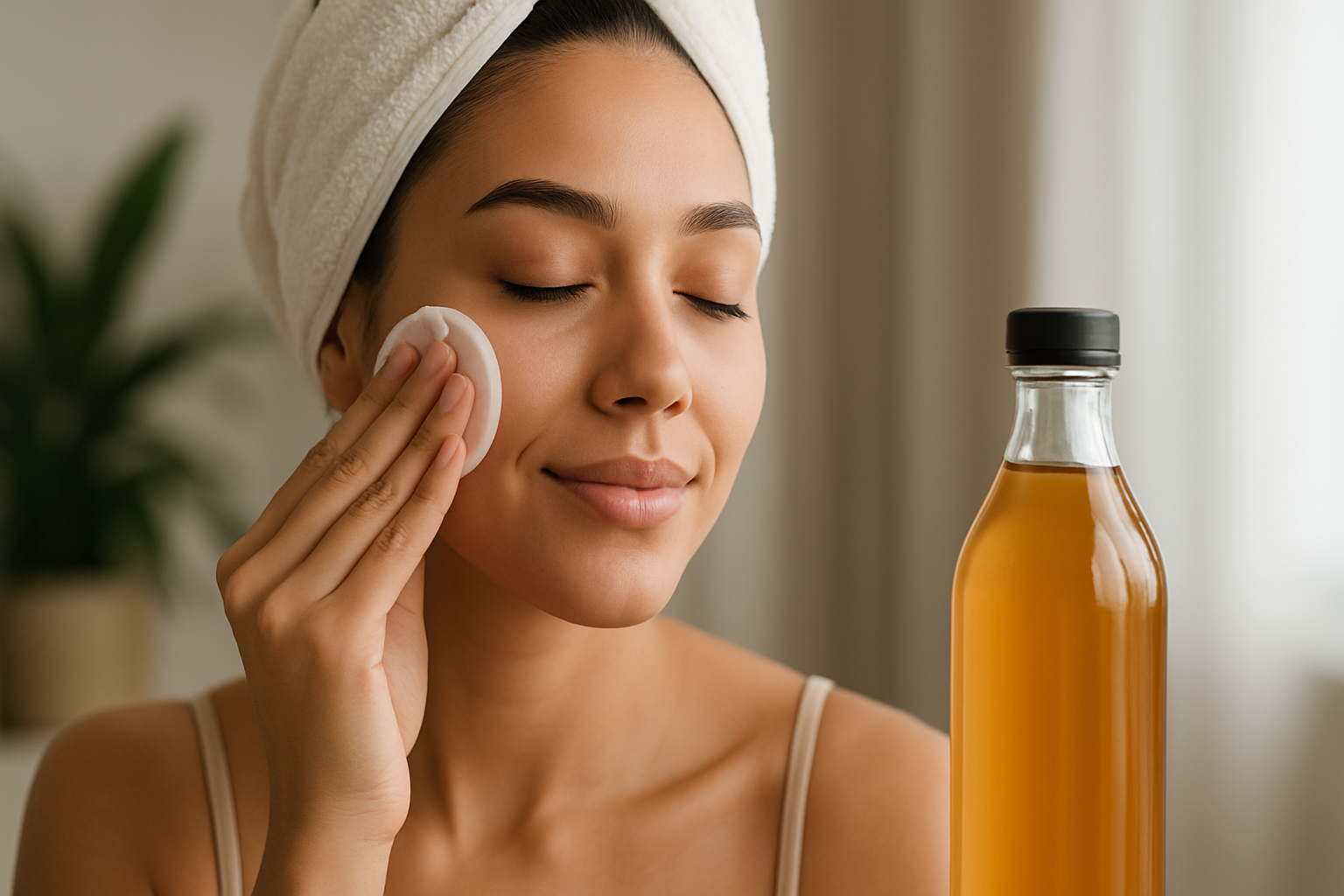Apple cider vinegar is a natural remedy that has gained popularity in skincare. Thanks to its natural components, it offers several benefits that can help maintain healthy skin. In this article, you’ll discover the main benefits of apple cider vinegar for the skin, how to use it correctly, and important precautions to consider.
What is Apple Cider Vinegar?
Apple cider vinegar is made from the fermentation of apple juice. It contains acetic acid, vitamins, minerals, antioxidants, and, when unfiltered (“with the mother”), also beneficial enzymes and bacteria. These properties make apple cider vinegar a natural ally for skin care.
Main Benefits of Apple Cider Vinegar for the Skin
1. Balances the Skin’s Natural pH
The skin has a slightly acidic pH that helps protect it from bacteria and pollutants. Apple cider vinegar, due to its acidity, can help restore the skin’s natural pH, especially after using products that disrupt this balance, promoting stronger and healthier skin.
2. Antibacterial and Antifungal Properties
The acetic acid in apple cider vinegar has antimicrobial effects that can help fight bacteria and fungi causing skin problems like acne or minor infections, helping keep the skin clean.
3. Gentle, Natural Exfoliation
Apple cider vinegar acts as a mild chemical exfoliant, helping to remove dead skin cells and promote cell renewal. This can improve skin texture and natural glow.
4. Relief for Certain Skin Conditions
Although scientific evidence is limited, some people use apple cider vinegar to soothe symptoms of conditions like eczema or psoriasis due to its calming and antimicrobial effects. However, it should be used cautiously and never as a replacement for medical treatment.
How to Use Apple Cider Vinegar on the Skin
To enjoy its benefits, it’s essential to dilute apple cider vinegar before applying it to the skin, as its acidity can cause irritation if used undiluted.
Simple Recipe for a Facial Toner:
- 1 part apple cider vinegar
- 3 parts water (preferably distilled or boiled and cooled)
How to use:
- Mix the vinegar and water.
- Apply the mixture with a cotton pad on clean skin.
- Leave on for a few minutes, then rinse with lukewarm water.
- Moisturize afterward to prevent dryness.
Frequency: Use this toner 1 to 2 times a week, monitoring your skin’s reaction.
Precautions to Keep in Mind
- Perform a patch test by applying a small amount to your forearm and waiting 24 hours to rule out reactions.
- Avoid contact with eyes and mucous membranes.
- Do not use on irritated skin, burns, or open wounds.
- Consult a dermatologist if you have sensitive skin or a skin condition.
- Discontinue use if you experience redness, itching, or burning.

